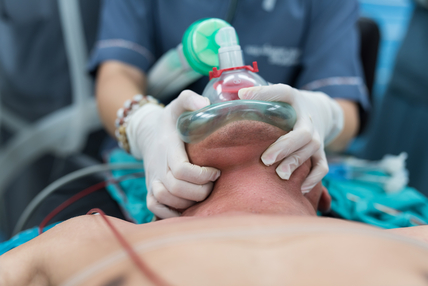|
Adapted from Will Denq's Grand Rounds presentation August 24th, 2016 A discussion of preoxygenation as well as the role of high flow nasal cannula and apneic oxygenation in the emergency setting. PreoxygenationThe goal of RSI is to quickly intubate patients while preventing aspiration and hypoxia. Preoxygenation during this process is important to prevent desaturation during this process, and is one of the few factors physicians can change. Increasing our "Safe Apnea Time" by pre-oxygenation can prevent increased risk of arrhythmia and hemodynamic instability. Critical arterial desaturation occurs at SaO2 levels of 88-90%. When pre-oxygenation occurs, the nitrogen in the system is being replaced by oxygen, called Denitrogenation. When breathing room air (79% nitrogen) ~450 mL of oxygen is present in the lungs of an average healthy adult. When a patient breathes 100% oxygen, this washes out the nitrogen, increasing the oxygen in the lungs to ~3,000 mL Critically ill patients will have a shorter Safe Apnea Time due to many factors, including increased metabolic demand, low functional reserve, airway obstructions and shunt physiology. Goals of PreoxygenationDenitrogenation of the lungs
Preoxygenation Proceedure
Apenic OxygenationAfter paralysis of a patient, apnea naturally occurs. During this time period, our Safe Apnea Time begins. Apneic oxygen is the passive oxygenation via nasal canula to continue diffusion of oxygen and prolong our period of safe saturation levels. Previously, the use of nasal canual to prolong safe saturation levels was frequently utilized. Recent studies, including RCTs, demonstrate that apneic oxygenation may not be as useful in critically ill patients due to the increased demands and shunt physiology, while those who are being intubated for airway protection may have a benefit.
0 Comments
Leave a Reply. |
Categories
Archive
February 2018
Please read our Terms of Use.
|

